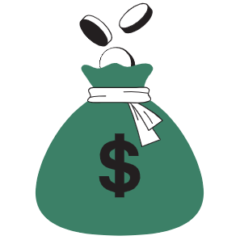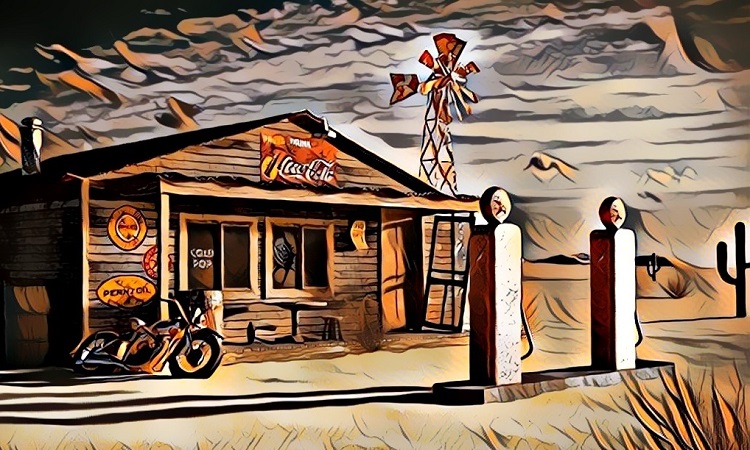Joel Greenblatt, founder of Gotham Funds, says that the secret to investing is figuring out the value of something and then paying a lot less to buy it. Obvious but wish it were that easy.
Price is not the problem. We see it quoted every day for the businesses that are publicly traded. A private business requires more work, but we could get its price if we wanted to from a willing seller.
Determining value on the other hand is tough, not because it is complicated. The math is the easy part but there is so much of the present and the future that goes into that math that it then becomes a guessing game.
And guessing game it is for the most part.
The quoted price for a business on any given day is often wrong. Wrong in the sense that it does not reflect the true value of a business at the time. Eventually though, the price and the value of that business will converge.
To give some intuition around how to think about valuation or how I think about valuation, assume for example that the year is 1990 and a gas station around the corner from your home is on sale.
And say it costs a million dollars to own it with no business extinction threat on the horizon. Business extinction threat for a gas station these days is real with the rapid electrification of our auto fleet plus with the eventual densification of our communities that make owning cars less of a necessity. But not many had that foresight in 1990. This just shows how hard it is to predict the future but predicting the future is how you get to the value.
But I digress.
So, without knowing much about how to value a business, here you are in the year 1990, trying to make a call on whether to buy that gas station or not. How would you make that call?
You intuitively know it already. You would want to know how fast can you recoup your original investment of a million dollars spent buying that business. Only then, you can think of profits.
So, return of your original investment comes first. And then comes return on your investment.
But there of course is more to that return of investment math. There is opportunity cost in terms of the stress and the time you’d incur running that business that needs to be factored in.
Then there is inflation and what that does to the value of future profits that business generates.
Buying a business also entails risks that you’ll want compensation for. Future profits, as you know, are not guaranteed.
Plus, what else could you have done with that million dollars? You could have used it to buy long-term Treasury bonds that were paying 10 percent interest at the time (1990). That is like doubling your money every seven years – with zero risk, with no effort and zero stress.
That business, hence, better be making more than that or else why bother. So, you’d demand your money back in a much shorter time than seven years. I’d say with all the hassles of running that gas station, it better return my original investment in like three years and double my money in five or I am buying Treasury bonds instead.
That same logic applies to a 100 billion dollar business that you might be considering owning a tiny piece of through the stock market. But you must still think like that owner about to buy a gas station. How long would it take for that business that you want to own a piece of to earn back 100 billion dollars in profits?
How does a publicly-traded business return profits back to their shareholders? Very similar to how a private business does – through cash payments. For publicly-traded businesses, that is issuing dividends.
This line of thought sometimes gets lost in all the hysteria around the day to day stock market moves but that is the crux of how you should think about making any long-term investment.
I am not picking on DoorDash but I’ll use it as an example. At its recent1 peak, it traded at a 100 billion dollar valuation.
It trades today2 at 22 billion dollars so about an 80 percent decline from the peak of about a year back.
But there is someone out there who paid 100 billion dollars for that business. They better be playing a different game than what a long-term business owner would play because that was an outlandish price to pay for that business.
And we intuitively know why it was an outlandish price. There is no way DoorDash in its current form could ever make 100 billion in profits in the entirety of its existence, forget a decade.
Now let’s compare that to say Microsoft. You can buy that business outright today2 if you have 1.8 trillion dollars in your bank.
Is that a good deal? Microsoft made 18 billion dollars in profits last quarter. That is roughly 60 billion dollars a year.
How many years would it take Microsoft to earn back your investment if you were to buy that stock (business) today?
$1.8 trillion divided by $60 billion gets us 30 years. That is in nominal dollars. Factor in inflation and it will take much longer.
Plus, you must consider business extinction risk. Would Microsoft be around in 30 years? The market, a collective opinion of millions of participants, thinks it will be.
The expectation also is that the profits Microsoft generates would grow over time, which in turn will shorten that return of investment timeframe.
And hence the richer price.
But whatever the business, what eventually counts is how soon is that business going to make back your initial outlay and then and only then come your profits. Return of investment first and then return on investment.
A perfect example of how that plays out is Warren Buffett‘s purchase of Burlington Northern Santa Fe (BNSF) back in 2009. BNSF is in the business of transporting stuff by rail through one of the largest rail networks in North America. So as plain of a business as plain can get.
Buffett paid 34 billion dollars to buy that business as part of the Berkshire Hathaway portfolio. Since that purchase, BNSF has paid out 45 billion dollars in dividends2.
The business hence, has paid more in dividends in about the first 10 years than what Buffett paid to acquire that business. Everything from now on and into perpetuity is all profits.
That should be the expectation from every investment we make. New businesses and ventures can take longer but not an infinite amount of time.
And this simple, back of the envelope hack is sometimes all we need to keep us out of harm’s way.
Buying stocks of prosperous concerns may be good business – but only at a certain price. But if you will make sure you know what you are getting for your money, you will be doing what nobody does in a bull market.
by Edwin Lefevre in Reminiscences of a Stock Operator.
Thank you for your time.
Cover image credit – Pixabay
1 March 12, 2021
2 December 31, 2022

